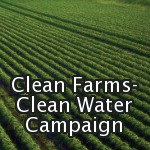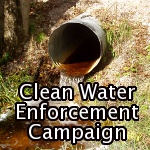
Document and Comment Library
Blogs and Background
Bay – Delta Water Quality Control Plan
The State Water Resources Control Board (State Board) must review the San Francisco Bay – Delta Water Quality Control Plan every three years, pursuant to the federal Clean Water Act. This review includes water quality standards, notably Delta salinity, and flow into and out of the Delta. It has been updated and revised twice in the last 34 years. The last full review took place in 1995. Following a lengthy delay, the 1995 standards were finally implemented into water rights permits in 2000. In 2006 the Board readopted the 1995 standards and began the present process to update the plan. CSPA was involved in the development of the 1995 Bay-Delta standards, the implementation of those standards in 2000 (CSPA litigated them), and the 2006 update.
State Board’s Delta Flow Criteria Report
In 2009, the State Legislature passed the Sacramento – San Joaquin Delta Reform Act, which required, in part, that the State Board and California Department of Fish and Wildlife contact proceedings to establish flows necessary and other requirements necessary to protect the public trust resources of the Delta.
The State Board conducted a proceeding in February, 2010 that brought together the fishery and water agencies, academia and stakeholders representing environmental and fishing organizations and water contractors to discuss “what fish need” in terms of Delta inflow and outflow. CSPA and its attorneys and consultants submitted extensive testimony and evidence in the proceeding.
In August 2010, the State Board issued a report entitled “Development of Flow Criteria for the Sacramento-San Joaquin Delta Ecosystem,” otherwise known as the Delta Flow Criteria Report. This Report concluded that substantially increased flows, return to a more natural and variable hydrograph, habitat restoration and reduced pollutant loading were necessary to protect the Delta. With respect to flows, the Board recommended the following criteria:
- 75% of unimpaired Delta outflow from January through June;
- 75% of unimpaired Sacramento River inflow from November through June; and
- 60% of unimpaired San Joaquin River inflow from February through June.
Pursuant to the Delta Reform Act, the Department of Fish and Wildlife conducted a parallel proceeding that cumulated in a report titled Quantifiable Biological Objectives and Flow Criteria for Aquatic and Terrestrial Species of Concern Dependent on the Delta in November 2010. Its flow recommendations mirrored those of the State Board Flow Report but added measurable biological objectives. CSPA was also intricately involved in the DF&W process.
Update of the Water Quality Control Plan for the Delta
The State Board conducted a workshop in 2008 with the intent of developing a Strategic Plan for the Delta as a prelude to initiating another review of the Water Quality Control Plan. A strategic workplan was subsequently adopted. CSPA submitted extensive testimony and exhibits in the development of the strategic plan.
The State Board issued a Staff Report in 2009 on the periodic review of the 2006 Bay-Delta Plan, which identified issues for further examination in the water quality control planning process. The Bay-Delta Plan update would proceed in four phases. Phase I would set flow standards for the San Joaquin River and major tributaries and consider the standard for South Delta salinity. Phase II would set standards for Sacramento River inflow, Delta flow, Delta outflow and Delta Suisun Marsh water quality. Phase III would incorporate the revised standards into the water rights permits through an evidentiary hearing. Phase IV would establish instream flows for major tributaries of the Sacramento River.
Phase I
In February 2009, the State Board issued a Notice of Preparation and solicited information on potential updates to potential modification to San Joaquin flow and south Delta salinity standards. A workshop was held in April 2009. A subsequent Notice of Opportunity for Public Comment was issued in late 2010. A workshop was held in January 2011. A revised NOP was issued in April 2011 followed by a Technical report released in October 2011 and Technical Appendices on the scientific basis, agricultural effects and hydropower analysis in February 2012. A workshop was held March 2012. A proposal and draft Substitute Environmental Document (CEQA equivalent) was released in December 2012 and a hearing conducted in March 2013. CSPA and its attorney and consultants have been extensively involved at every step throughout this entire process.
Although the State Board’s 2010 flow report recommended that the San Joaquin River needed 60% of unimpaired San Joaquin River inflow from February through June, the State Board only proposed 35%. They also proposed to eliminate the Central Valley Project Improvement Act requirement to double production of salmon and steelhead and relax south Delta salinity standards. Comments by agencies and fishing groups, including CSPA, were overwhelmingly negative. The State Board has gone back to the drawing boards and will reissue and recirculate a revised proposal and SED for further comment later in 2013.
Phase II
The State Board issued supplemental NOP for Phase II in January 2012, held a scoping meeting in April 2012 and, in August 2012, released a revised notice of public workshops addressing: 1) ecosystem changes and the low salinity zone; 2) Bay-Delta fishery resources and 3) analytical tools for evaluating the water supply, hydrodynamic and hydropower effects. The workshops were held workshops in September and November of 2012. Again, CSPA and its attorneys and consultants submitted extensive testimony and evidence at all three workshops.In January 2013, the State Board consultant released a summary of the evidence presented at the workshops and the Board held an information hearing in April 2013 to discuss the report and hear recommendations on possible next steps. Additional workshops are likely to be scheduled later in 2013, release of draft environmental documents is likely in early 2014 for adoption in June 2014.
Phase III
Since Phases I and II are not self-implementing, Phase III will cover implementation of the adopted Bay-Delta through necessary water rights decisions and conditions of water quality certification for relicensing of FERC relicensed hydroelectric projects. The proceeding will entail a lengthy months long evidentiary hearing with testimony and evidence under oath, subject to cross-examination and rebuttal. Phase III represents the allocation of water and the balancing of he public trust. This phase has not commenced.
Phase IV
Pursuant to the Delta Reform Act, the State Board will develop flow objectives and associated implementation plans necessary to protect public trust resources for six to nine Sacramento-San Joaquin Delta priority tributaries by June of 2018.









